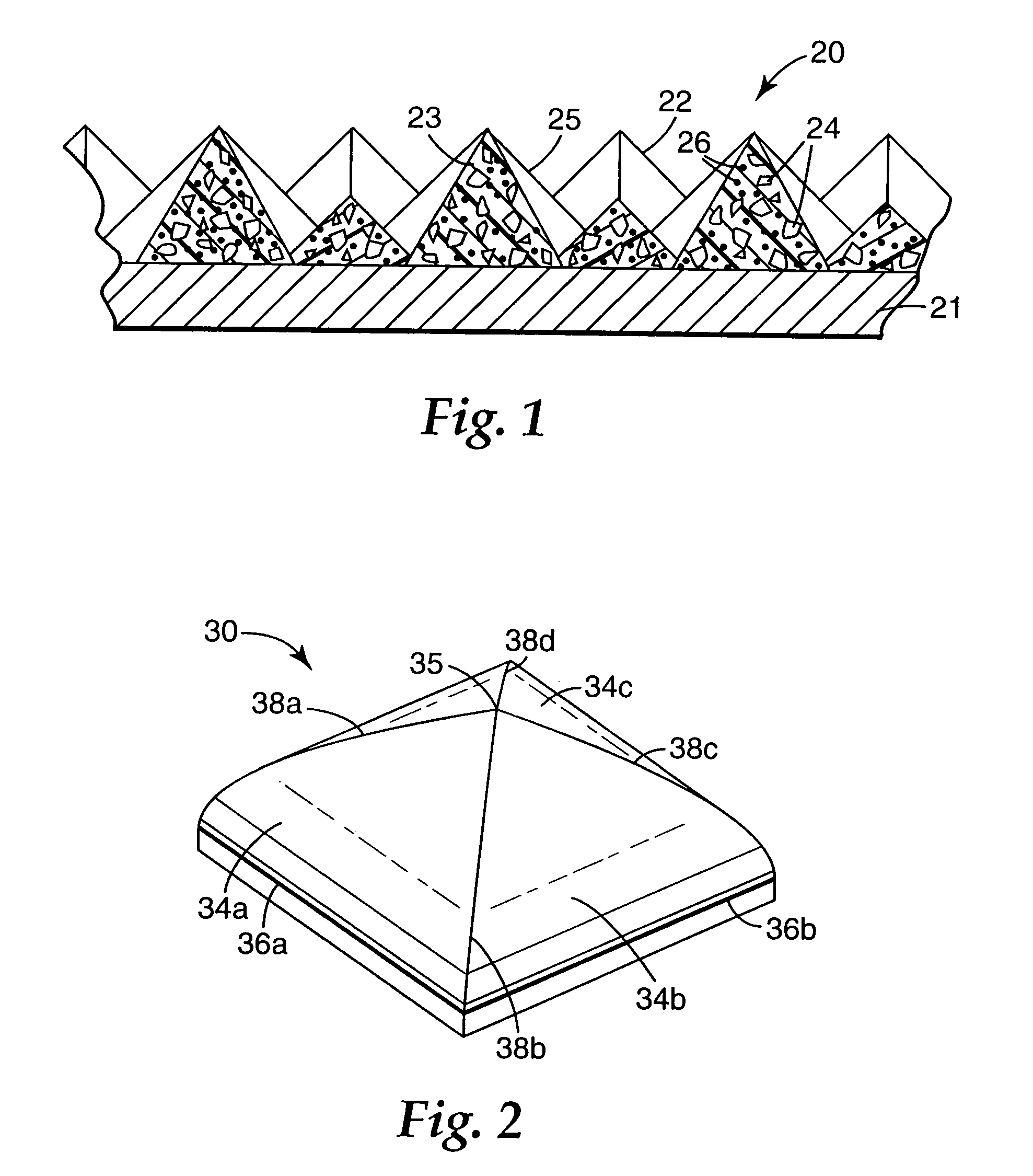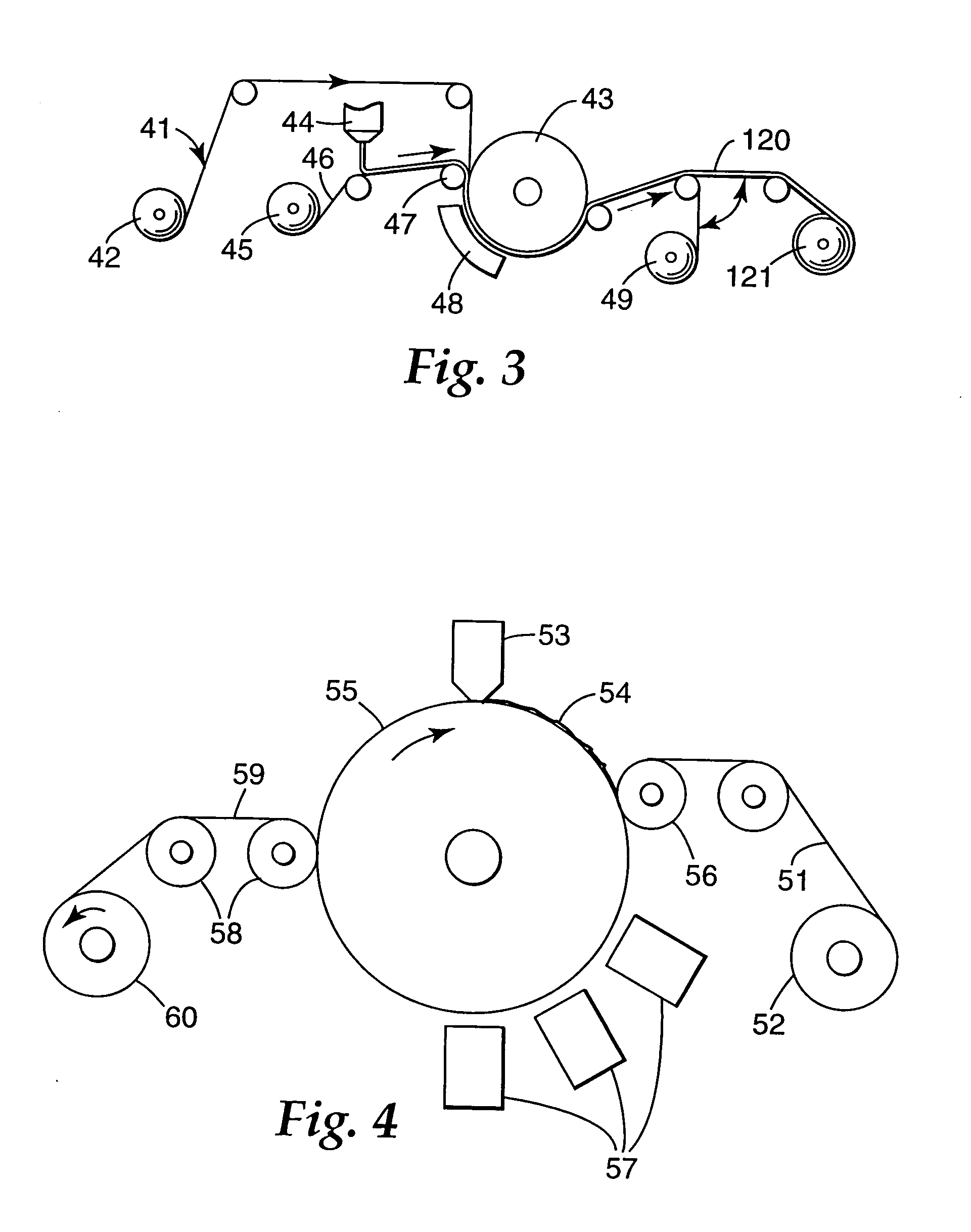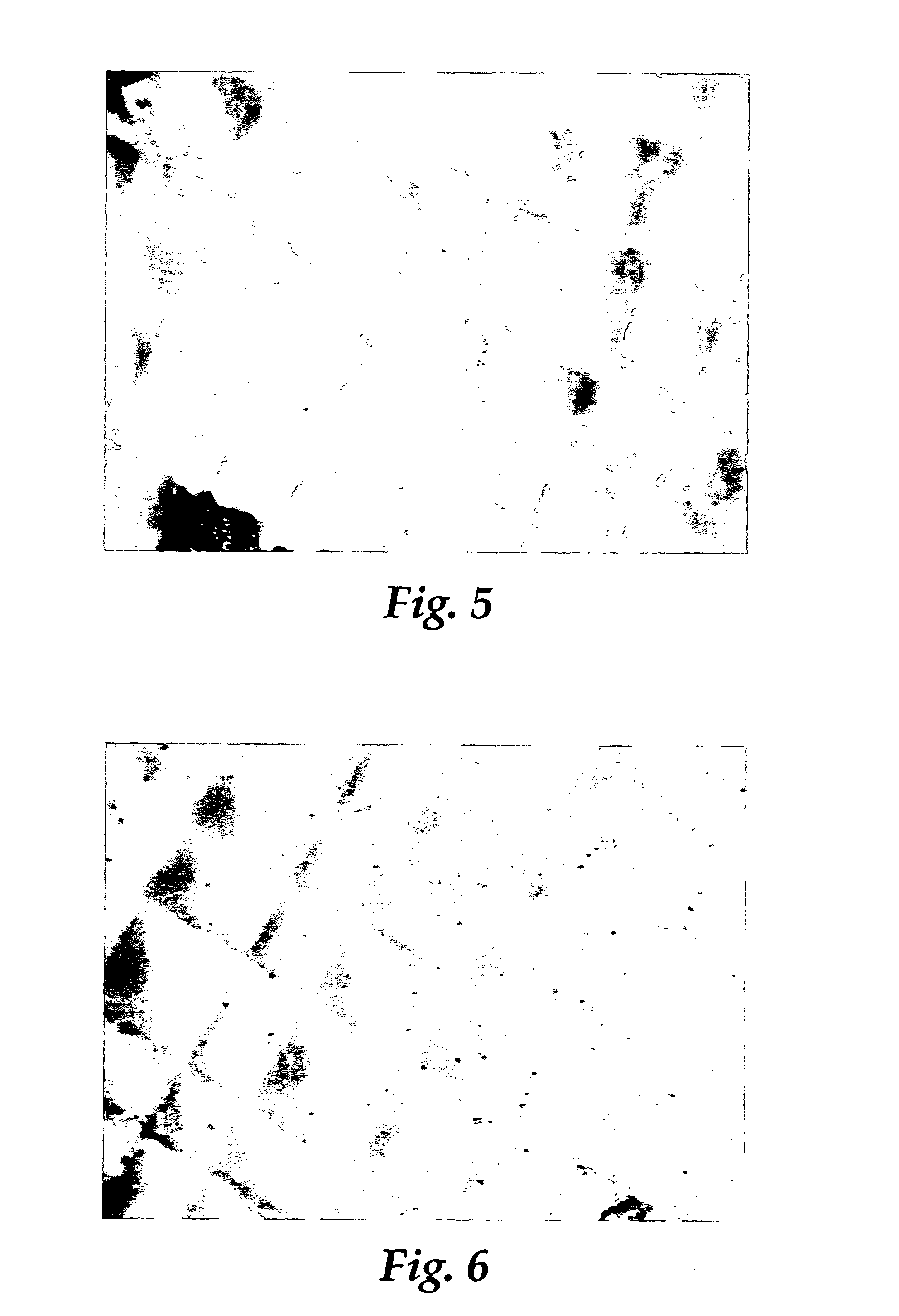Compositions for abrasive articles
a technology of compositions and abrasives, applied in the field of abrasive articles, can solve the problems that the cutting rate of the abrasive film is not always the desired rate for many other applications, and achieve the effects of consistent surface finish, long cutting life and consistent cutting
- Summary
- Abstract
- Description
- Claims
- Application Information
AI Technical Summary
Benefits of technology
Problems solved by technology
Method used
Image
Examples
examples
The following non-limiting examples will further illustrate the invention. All parts, percentages, ratios, etc., in the examples are by weight unless otherwise indicated. The following abbreviations listed in Table 1 are used throughout the Examples.
TABLE 1TMPTAtrimethylol propane triacrylate; commercially available from Sartomer Co.under the trade designation “SR351”TATHEICtriacrylate of tris(hydroxy ethyl)isocyanurate; commercially available fromSartomer Co. under the trade designation “SR368”PH22-benzyl-2-N,N-dimethylamino-1-(4-morpholinophenyl)-1-butanone,commercially available from Ciba Geigy Corp. under the trade designation“Irgacure 369”ASFamorphous silica filler, commercially available from DeGussa under thetrade designation “OX-50”60 CAOceramic aluminum oxide, grade 60 (approx. 400 micrometers averageparticle size) according to the teachings of U.S. Pat. No. 5,312,78980 CAOceramic aluminum oxide, grade 80 (approx. 300 micrometers averageparticle size) according to the te...
examples 16-17
Photomicrographs of Examples 16 and 17 are shown in FIGS. 5 and 6. These photomicrographs show large topography abrasive composites made by curing outside of the production tooling.
PUM
| Property | Measurement | Unit |
|---|---|---|
| particle size | aaaaa | aaaaa |
| height | aaaaa | aaaaa |
| particle size | aaaaa | aaaaa |
Abstract
Description
Claims
Application Information
 Login to View More
Login to View More - R&D
- Intellectual Property
- Life Sciences
- Materials
- Tech Scout
- Unparalleled Data Quality
- Higher Quality Content
- 60% Fewer Hallucinations
Browse by: Latest US Patents, China's latest patents, Technical Efficacy Thesaurus, Application Domain, Technology Topic, Popular Technical Reports.
© 2025 PatSnap. All rights reserved.Legal|Privacy policy|Modern Slavery Act Transparency Statement|Sitemap|About US| Contact US: help@patsnap.com



